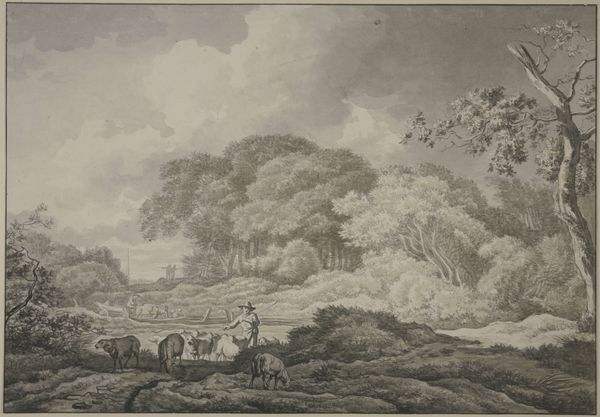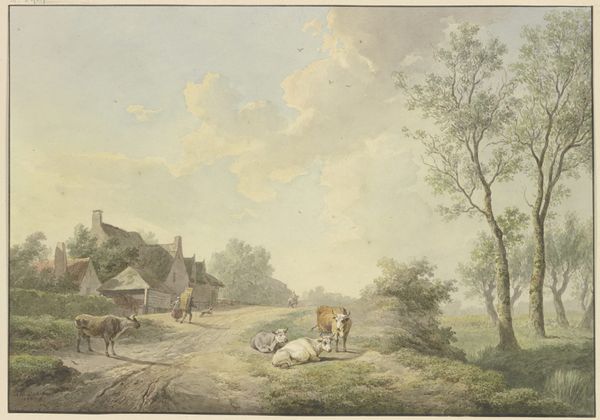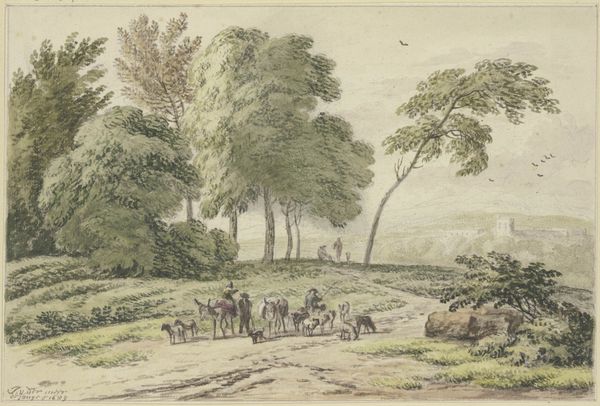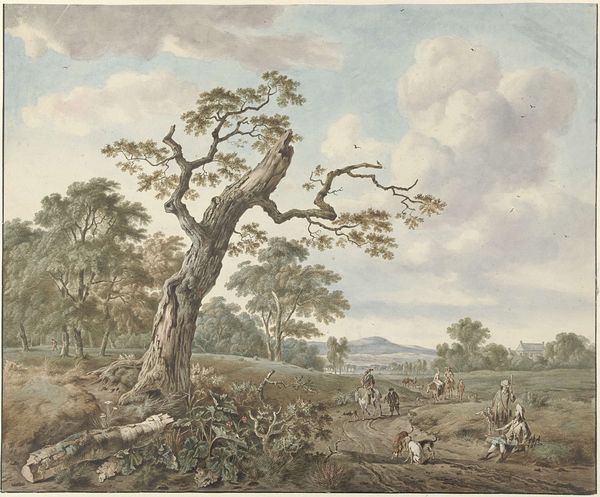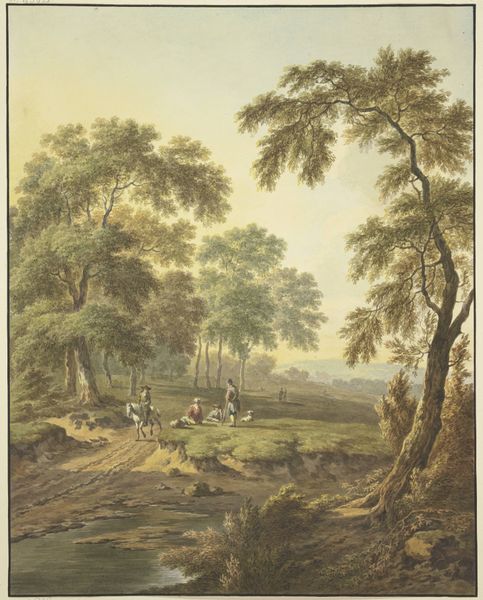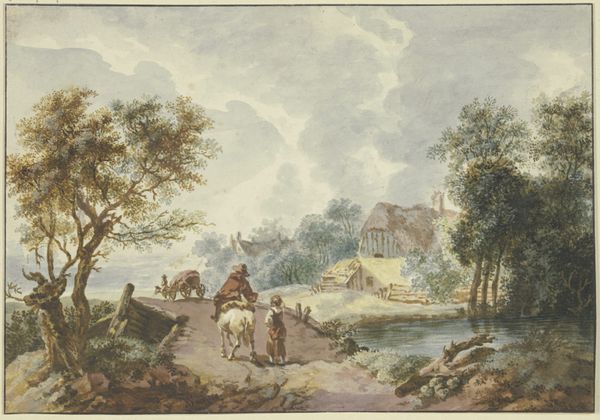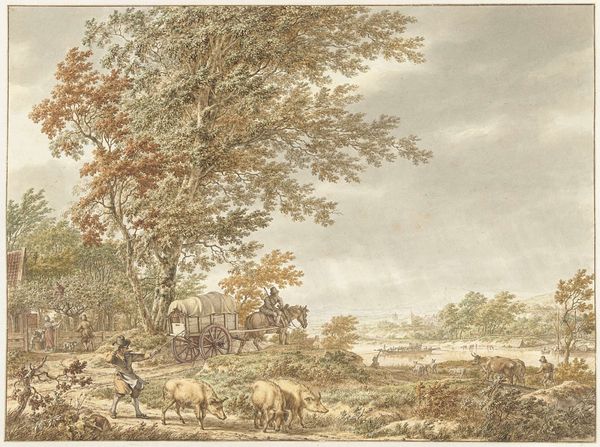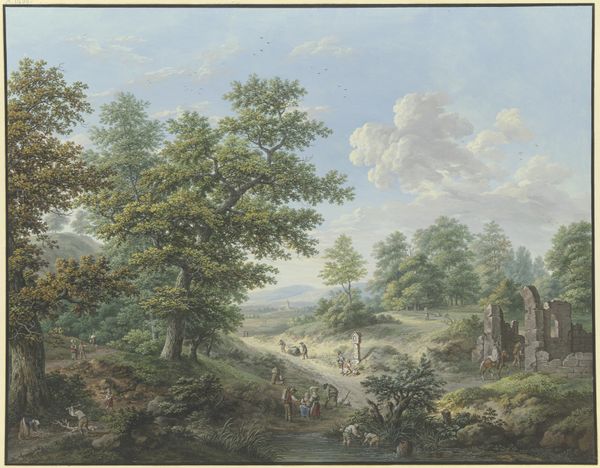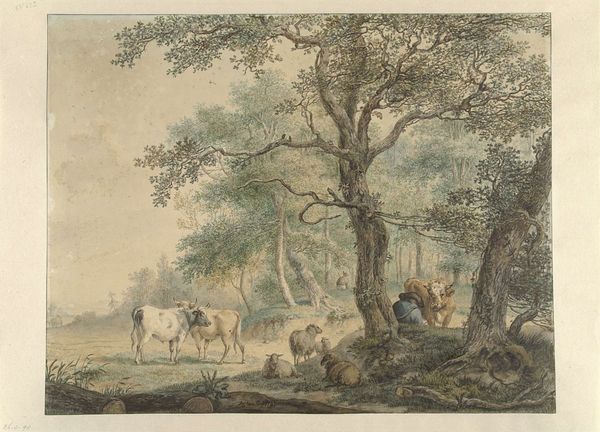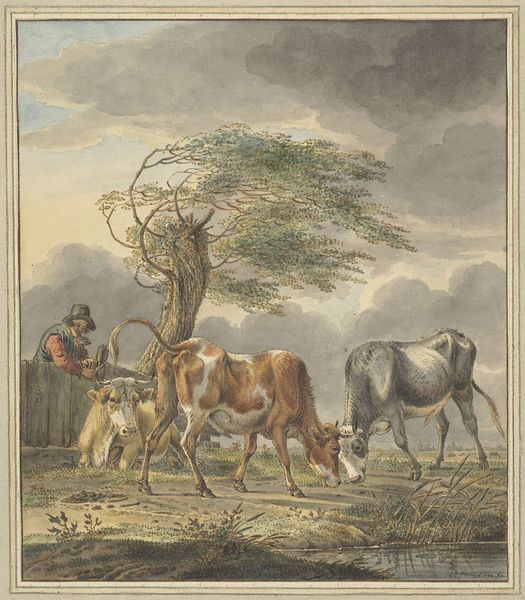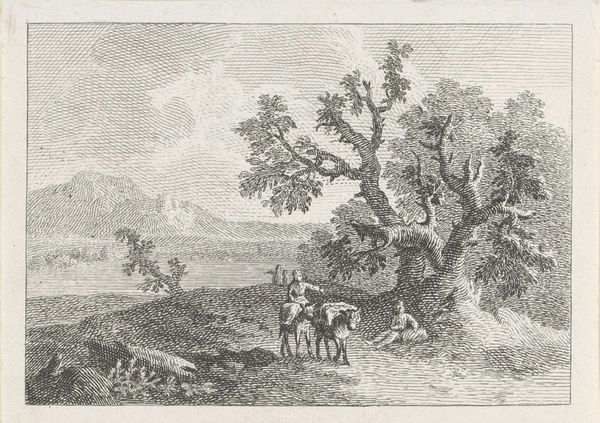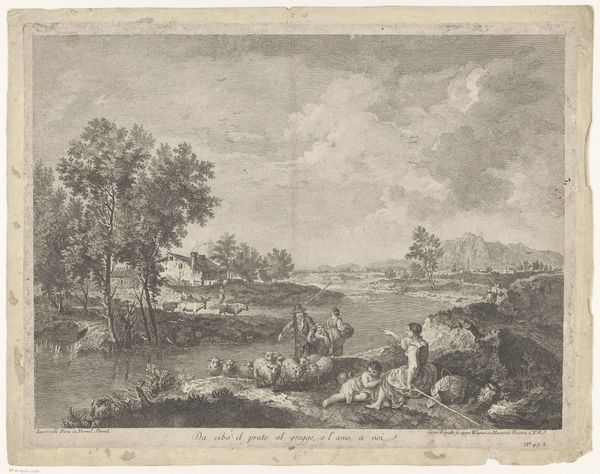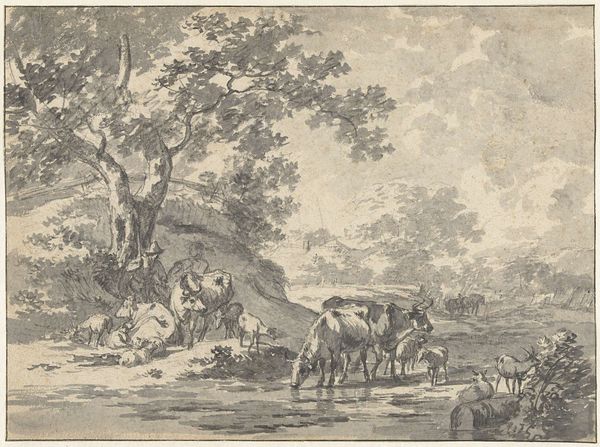
drawing, watercolor, graphite
#
drawing
#
landscape
#
watercolor
#
coloured pencil
#
15_18th-century
#
graphite
#
watercolor
Copyright: Public Domain
Jan Hulswit made this watercolor of cows and sheep by a cottage at the turn of the 19th century. Hulswit's pastoral scene reminds us that landscape painting wasn't just about pretty views; it was deeply tied to ideas about land ownership, labor, and national identity. During Hulswit's lifetime, the Dutch Republic was undergoing major upheaval. The old aristocratic order was crumbling, and new ideas about democracy and individual rights were taking hold. These changes had a profound impact on how people saw themselves and their relationship to the land. Artists began to focus on the everyday lives of ordinary people. Hulswit’s painting romanticizes rural life, yet it also reflects a subtle negotiation of class and social hierarchies. The animals, symbols of wealth and sustenance, are rendered with care, while the cottage suggests a simple, perhaps idealized, existence. Look at how the soft light and muted colors evoke a sense of tranquility and harmony, inviting us to reflect on our own connections to the natural world. What does this rural scene suggest about the values and beliefs of the time?
Comments
No comments
Be the first to comment and join the conversation on the ultimate creative platform.
